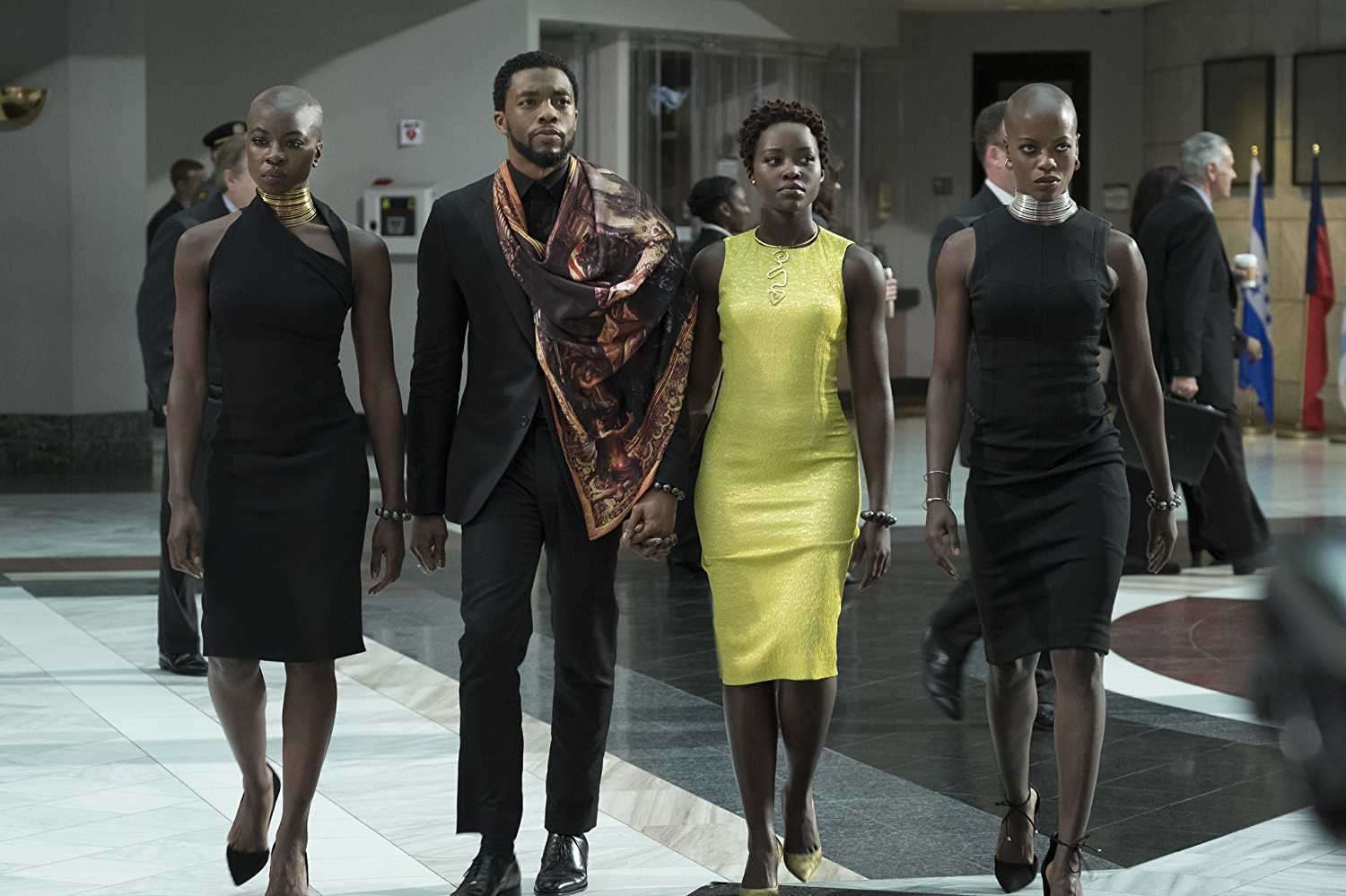
Plot Summary:
Embark on an exhilarating journey as Prince T’Challa, known as Black Panther, returns to Wakanda after the events of Captain America: Civil War. Discover a hidden African paradise, a nation of breathtaking technology and rich traditions. But when dark forces conspire to shatter this utopia, T’Challa must assemble an unlikely alliance. Join forces with the fierce Dora Milaje and the resourceful C.I.A. agent Everett K. Ross as they stand together to defend Wakanda from the brink of global chaos.
Table of Contents
About the designer:
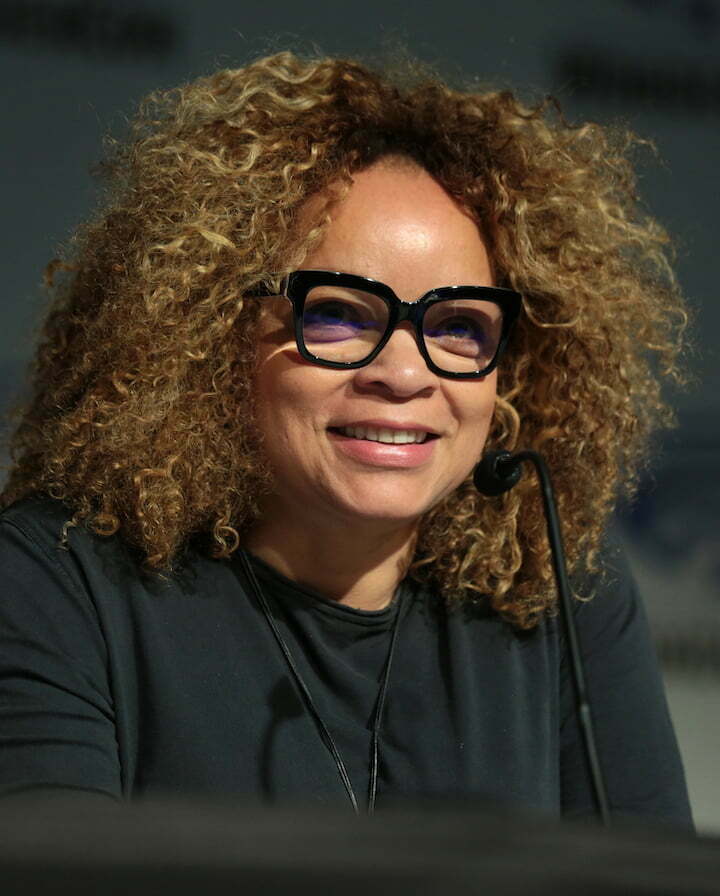
Photo/Wikipedia
Renowned costume designer Ruth E. Carter is a master storyteller through her craft. With a career spanning nearly 30 years and over 40 films, Carter has established herself as one of the most sought-after designers in the industry. Her unparalleled ability to bring characters to life through clothing and overall appearance has garnered her three Academy Award nominations. Notably, her exceptional work on Black Panther earned her the historic distinction of becoming the first African-American to win the prestigious award in the Best Costume Design category, marking a significant milestone for both Carter and Marvel Studios.
Costume relevance to the story:
Black Panther is an action, adventure, superhero, fantasy and science fiction movie amalgamation of African cultures and traditions. From body embellishments to jewelry, mask to shoes all are inspired by African Cultures. In the movie besides Africa, there are scenes of California, England and Korea and costumes were different with the locations.
Designing Facts:
1. The Influence of African Colors
The film prominently features the colors black, red, and green, which hold deep cultural significance in African traditions. These colors symbolize power, strength, and unity, reflecting the vibrant and diverse cultures of the African continent.
2. Authenticity Through Artifact Sourcing
Costume designer Ruth E. Carter went to great lengths to ensure the authenticity of the Wakandan clothing and jewelry. She sent her team to Ghana and South Africa to source real artifacts, textiles, and jewelry, using them as prototypes for the costumes in the film. This attention to detail contributed to the rich and immersive world of Wakanda.
3. Traditional African Tribes as Inspiration
Carter drew inspiration from various African tribes to create the unique costumes in Black Panther. The Maasai, Himba, Dogon, Basotho, Tuareg, Turkana, Xhosa, Zulu, Suma, and Dinka tribes all influenced the clothing worn by the characters. By incorporating elements from these diverse cultures, the film pays homage to the rich heritage of Africa.
4. Shuri’s Dinka-Inspired Corset
One standout piece is Shuri’s corset, which takes inspiration from the beaded corsets of the Dinka people, one of the largest tribes in South Sudan. This design choice showcases the blending of traditional African aesthetics with a futuristic twist, highlighting the film’s Afrofuturist themes.
5. The Dogon Influence on the Jabari Tribe
The costumes of the Jabari tribe draw inspiration from the clothing of the Dogon people, a tribe residing in the central plateau region of Mali. By incorporating the Dogon style, Carter aimed to infuse the costumes with a sense of African customs while also elevating them to reflect the fantastical elements of Wakanda.
6. Symbolism of the Color Blue
In Black Panther, the color blue is used to represent outsiders or elements that are out of place within Wakanda. Characters such as Klaue, Ross, and Killmonger, who are foreign to Wakanda, are often seen wearing blue clothes. This deliberate choice adds depth to the narrative and highlights the contrast between Wakandan and Western/European cultures.
7. The Significance of Neck Rings
The Dora Milaje, the all-female bodyguards of the Black Panther, wear neck rings known as dzilla. This tradition originates from the Ndebele people of southern Africa, where wives wear these rings as a symbol of matrimonial loyalty. The inclusion of neck rings pays homage to the comic book source material and reinforces the cultural authenticity of the film.
8. Killmonger’s Mask
Killmonger’s distinctive mask in the film combines various African animal features, including antelope antlers, a simian face, and a lion’s mane. This symbolism represents Killmonger as a composite of different elements, emphasizing his complex character and his connection to African heritage. The mask also draws inspiration from a similar one worn by Killmonger in the comics.
9. Nakia’s Green Symbolism
The character Nakia is consistently associated with the color green. This choice reflects her affiliation with the River Tribe and her ability to adapt to the outside world while remaining true to her Wakandan roots. The green color serves as a visual representation of her connection to nature and her role as a protector of her people.
10. Wakandan Glyphs and Symbols
In a scene where Shuri presents T’Challa with new “sneakers,” Wakandan glyphs briefly appear on the surfaces. These glyphs add depth to the fictional Wakandan language and enhance the film’s world-building, immersing the audience in the technological advancements of the nation.
In Conclusion, Black Panther (2018) stands out not only as a remarkable superhero film but also as a celebration of African culture and heritage. The costume design, influenced by various African tribes and traditions, adds layers of authenticity and symbolism to the characters and the story. Through meticulous research and attention to detail, the filmmakers brought the rich tapestry of African cultures to life, creating a visual feast that resonated with audiences worldwide.
Awards and Nominations:
Winner– OSCAR, Awards Circuit Community Awards, Black Reel Awards, Broadcast Film Critics Association Awards, International Online Cinema Awards (INOCA)(2018), Online Film & Television Association, Online Film Critics Society Awards, Seattle Film Critics Awards
Nominations– Saturn Award, CinEuphoria Awards, Costume Designers Guild Awards, Gold Derby Awards, International Online Cinema Awards (INOCA)(2019), Satellite Awards,
Some of the dresses from The Movie:
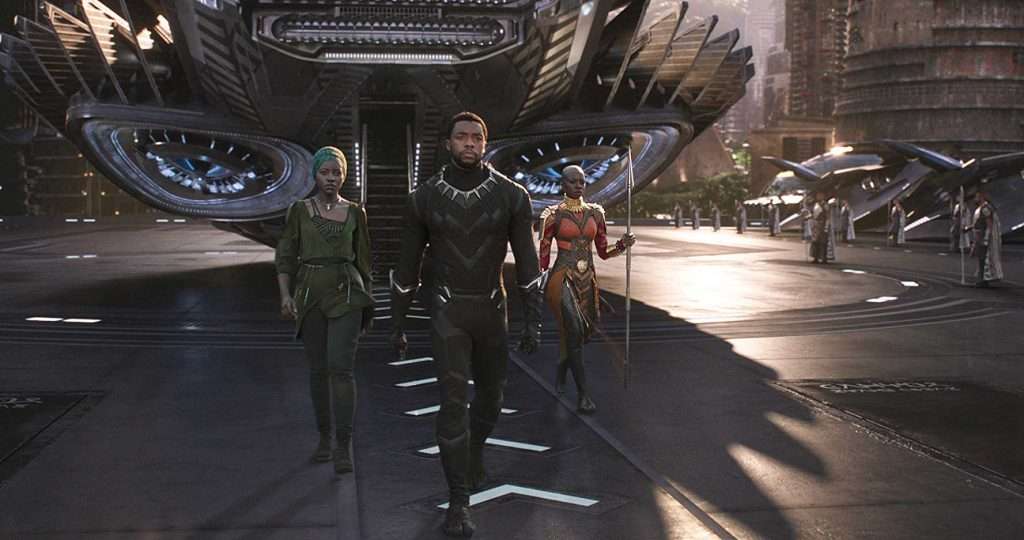
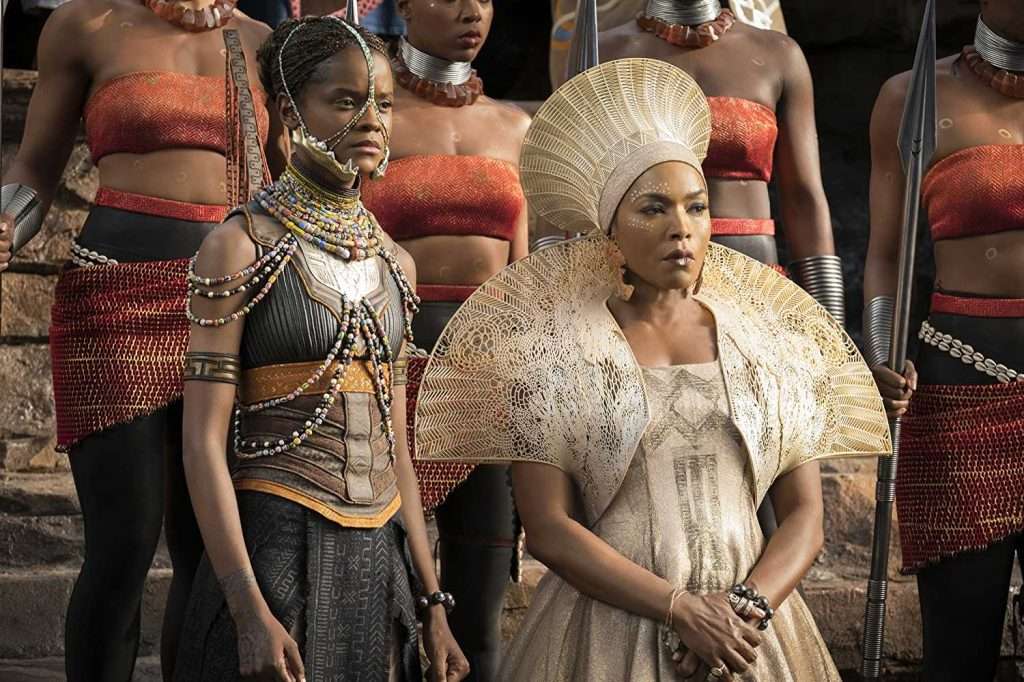

Florence Kasumba, Danai Gurira wearing silver and golden armor . Neck rings and arm rings from South Africa, Beadwork is inspired by the Turkana tribe from Kenya. On the other hand, Nakia wearing sacred geometry pattern of Africa and beaded necklace with River Stone which are inspired by Suri people of Ethiopia.
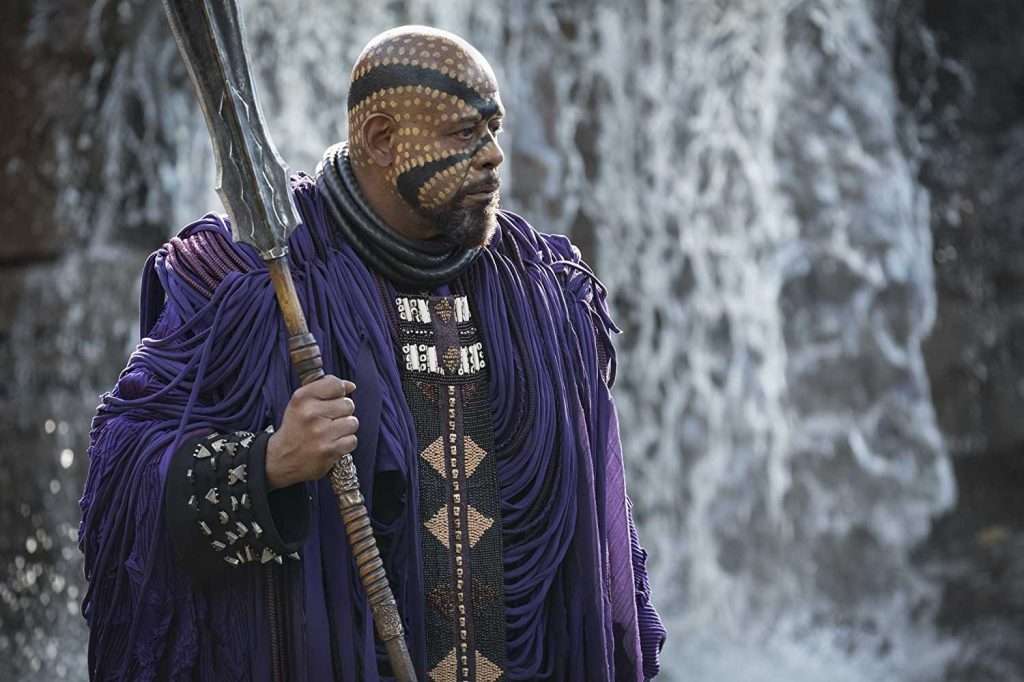
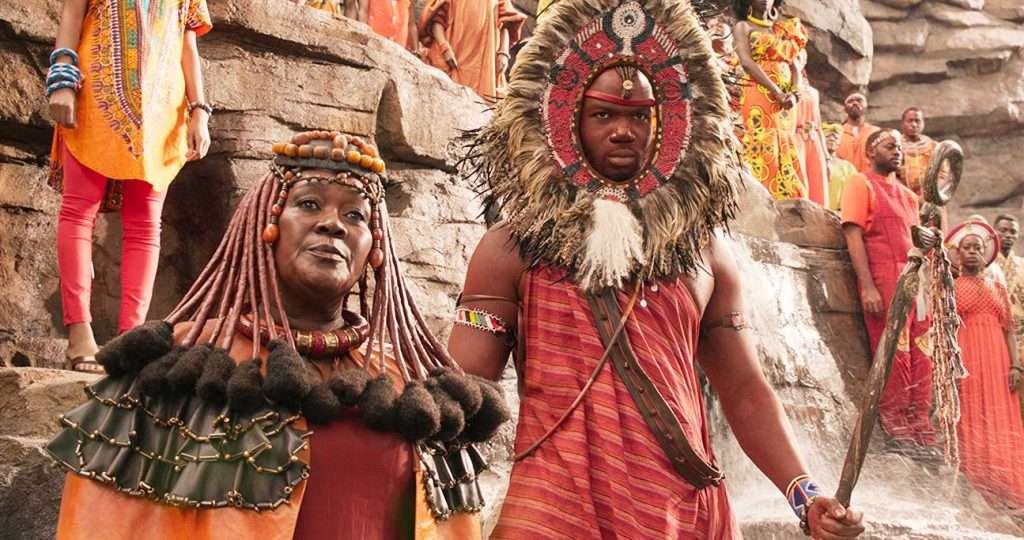
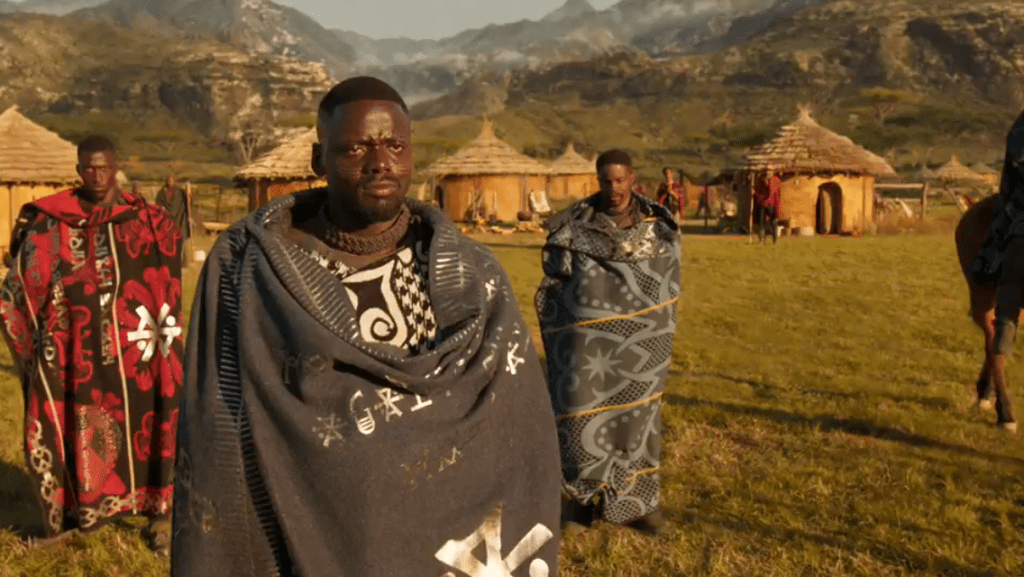
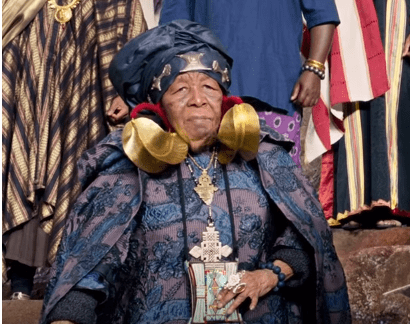
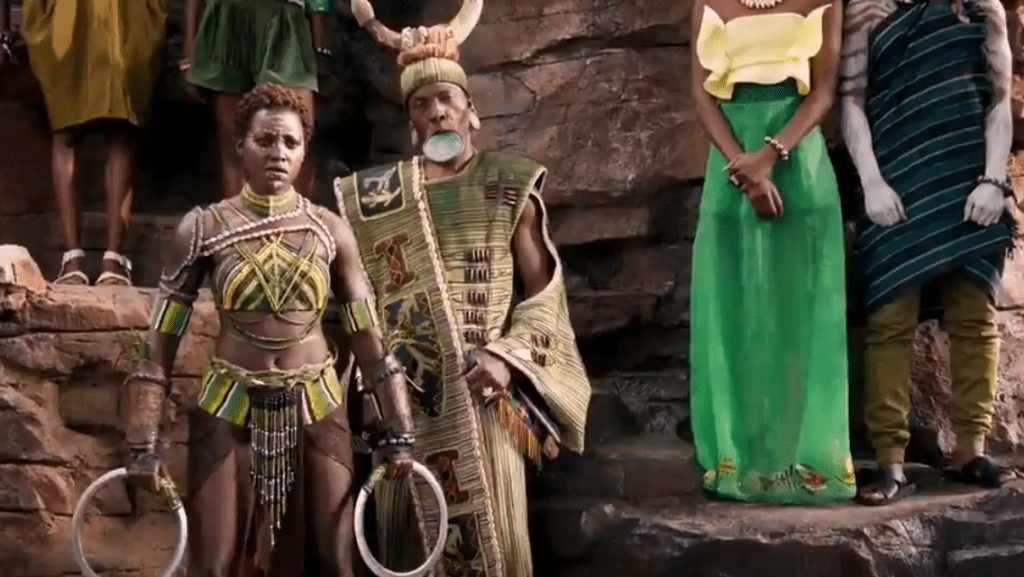
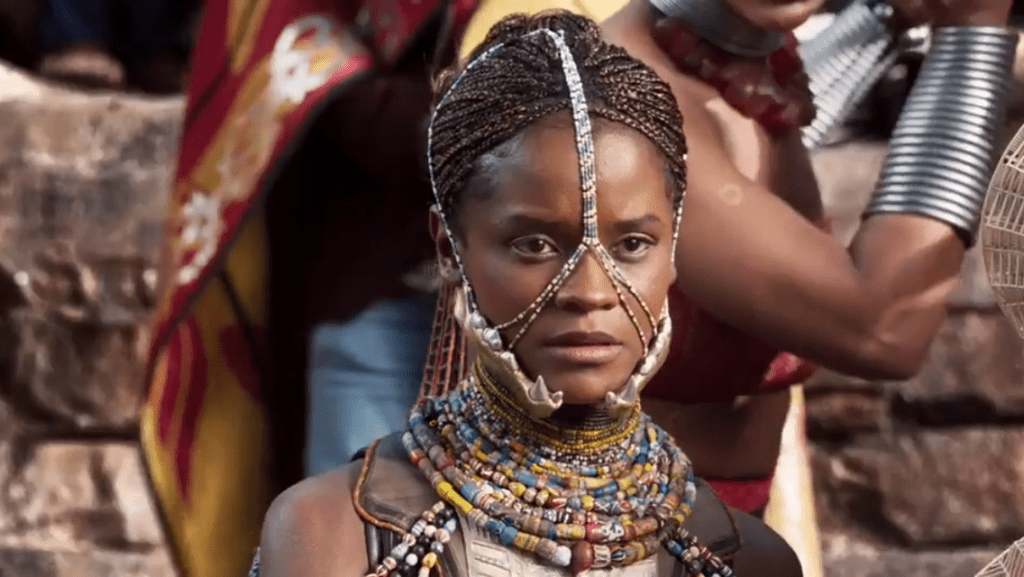
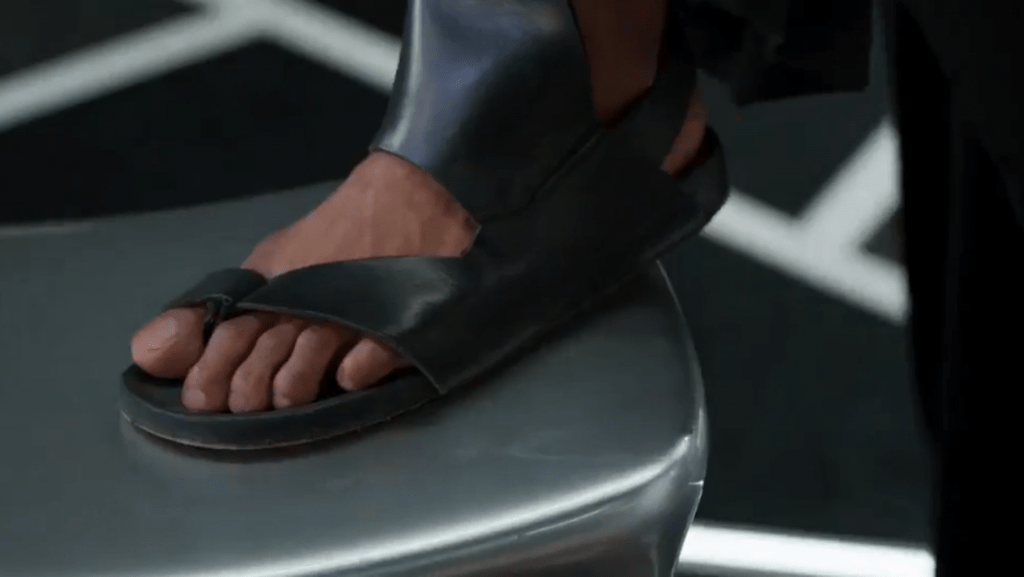

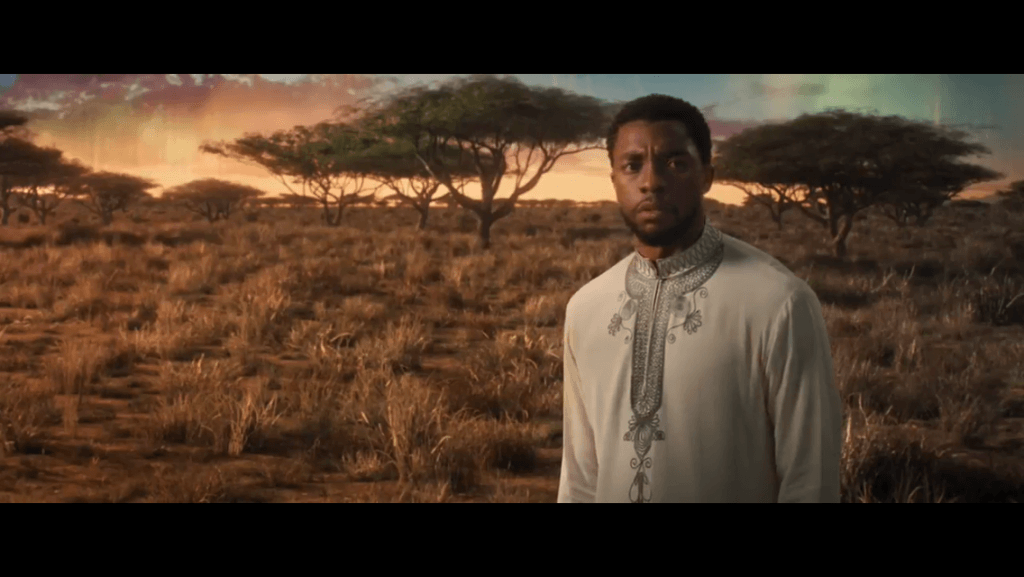
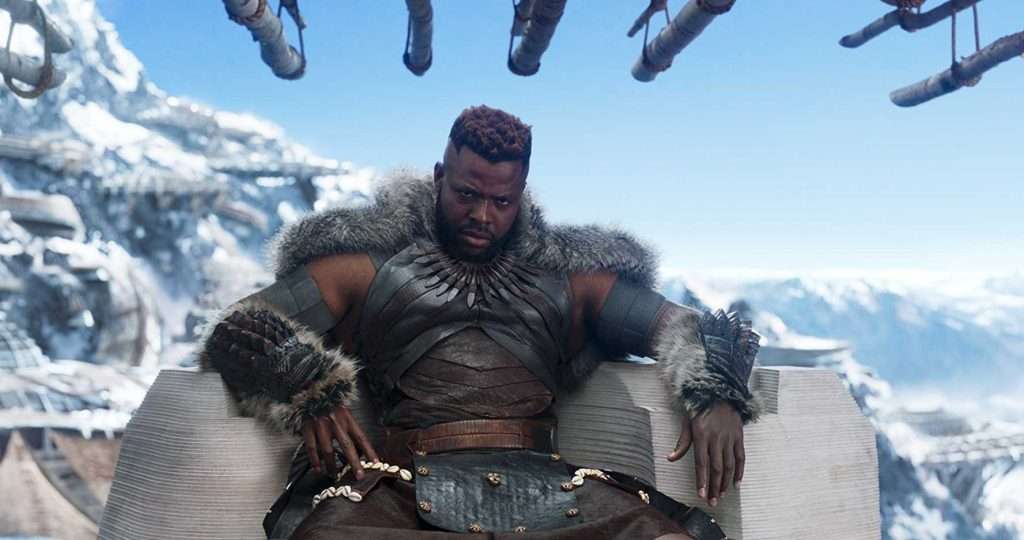
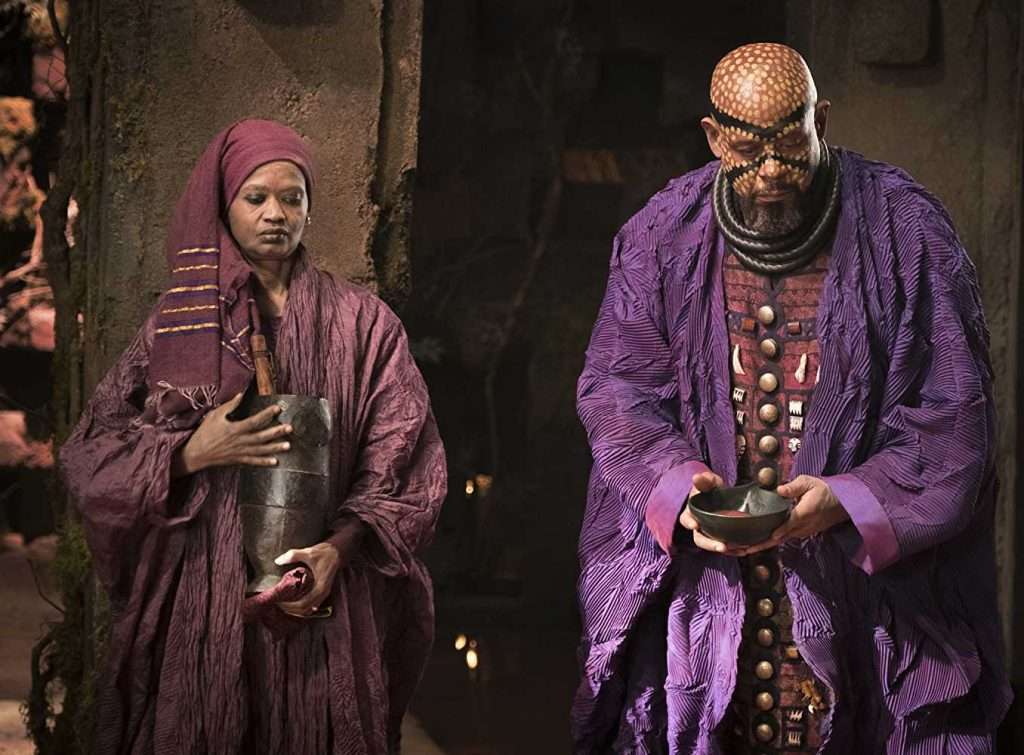
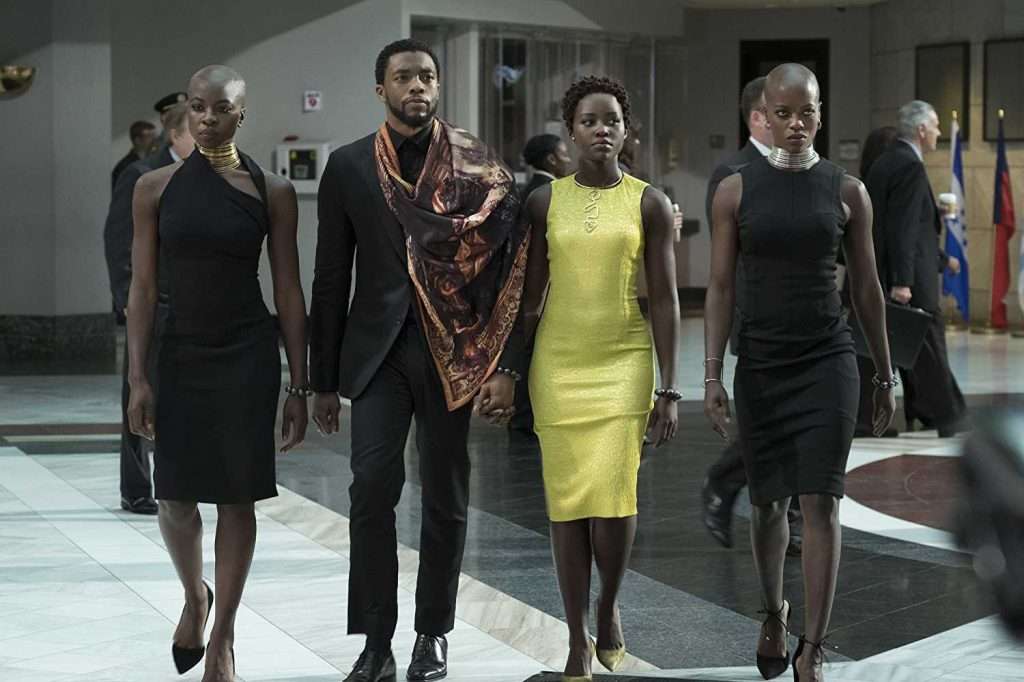
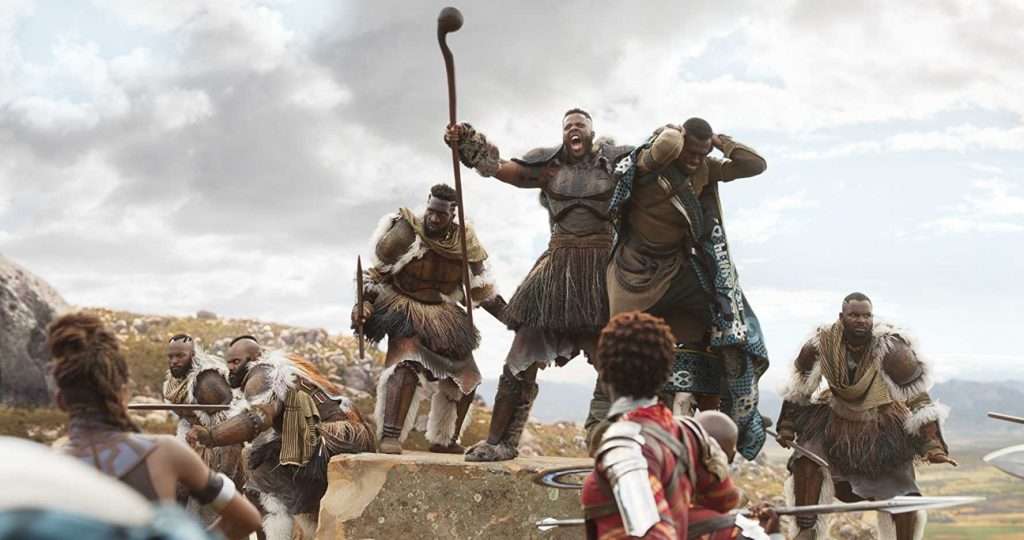
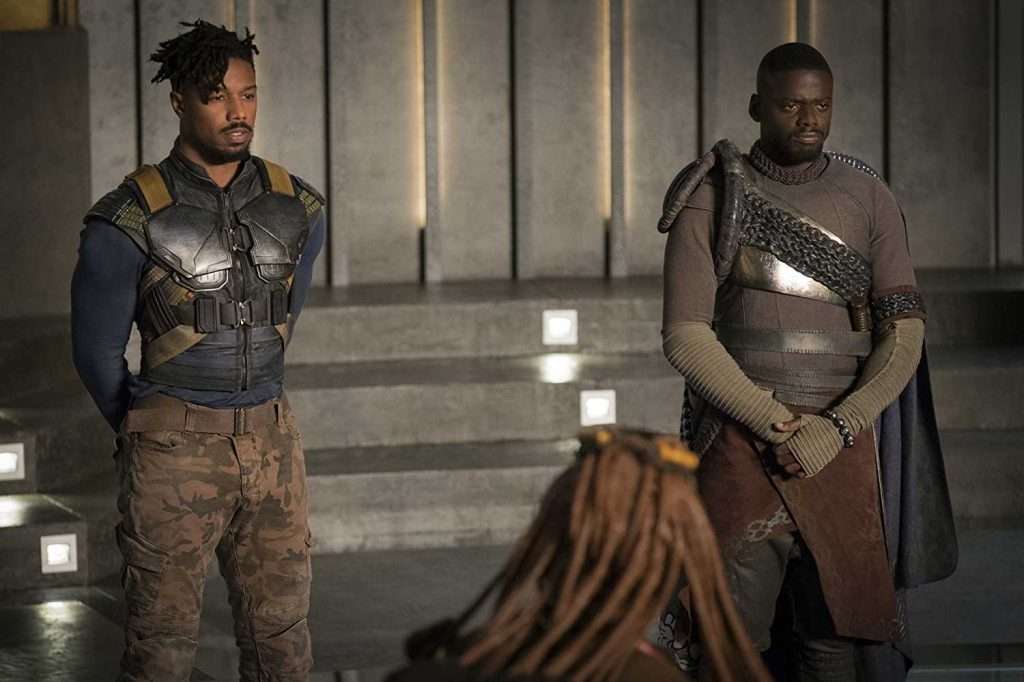
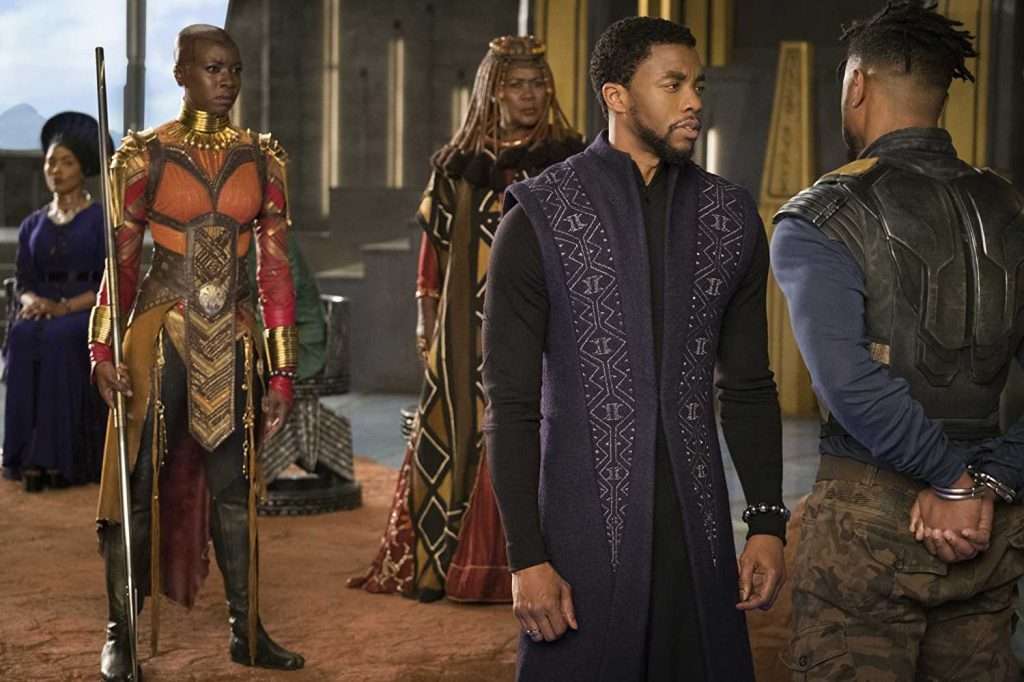
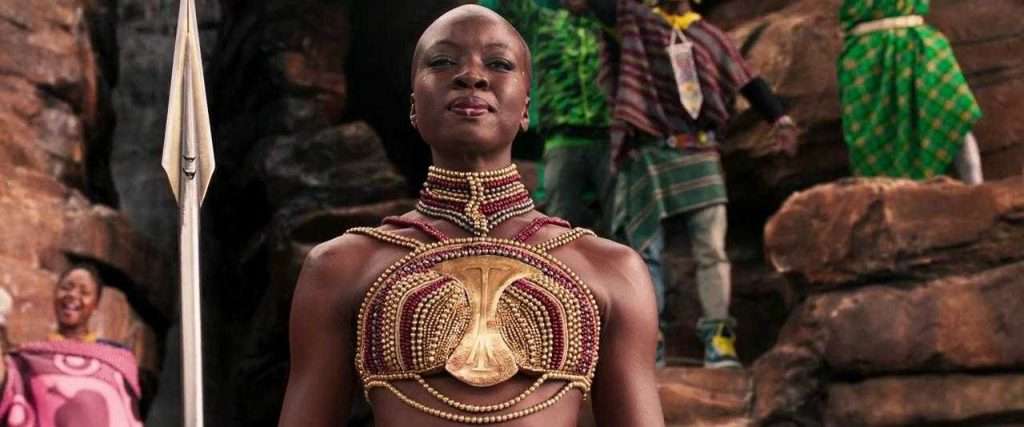
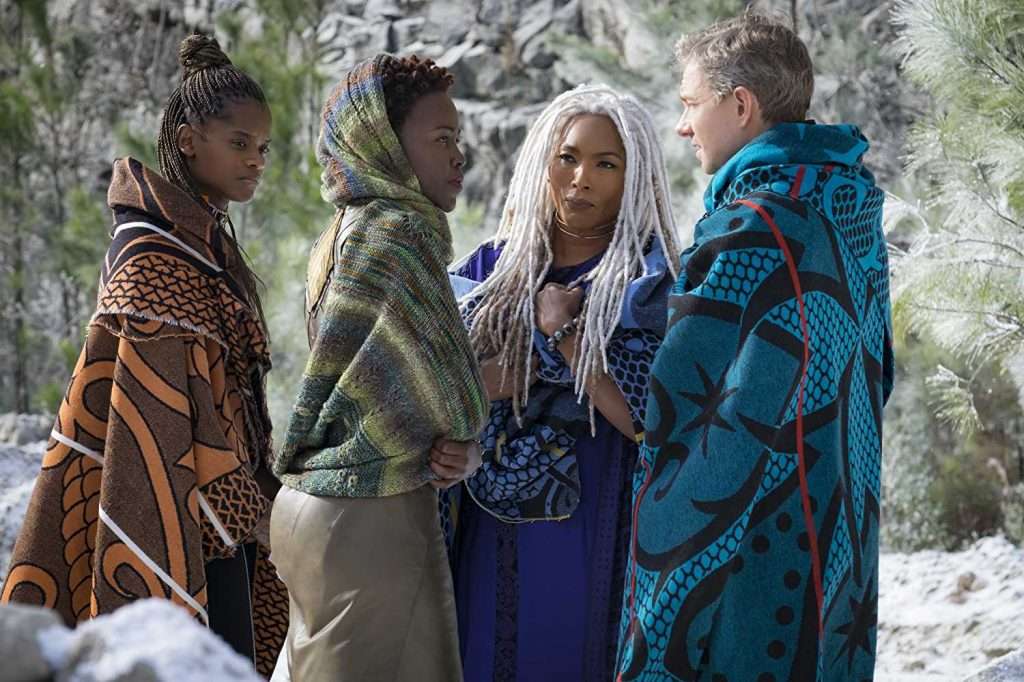
FAQs
Q1. How did the colors black, red, and green represent African culture in Black Panther?
These colors have historical significance in African culture. Black represents power and strength, red symbolizes vitality and life, and green represents nature and prosperity. By incorporating these colors, Black Panther pays homage to African heritage and identity.
Q2. Did the costume designer study any specific fashion designers for inspiration?
Yes, costume designer Ruth E. Carter studied the works of contemporary fashion designers such as Issey Miyake, Yves Saint-Laurent, and Donna Karan. Their unique styles and innovative approaches to fashion influenced the design choices in the film.
Q3. What is the cultural inspiration behind the neck rings worn by the Dora Milaje?
The neck rings worn by the Dora Milaje are inspired by the Ndebele people of southern Africa, where wives wear them as a symbol of matrimonial loyalty. This element was incorporated into the film as a nod to the comic book source material and to add cultural authenticity.
Q4. How did the filmmakers create distinct cultures for each Wakandan tribe?
The filmmakers drew inspiration from various African tribes to create distinct cultures for each Wakandan tribe. The Golden Tribe represents the royal family and uses a motif of black and a sun symbol found throughout Africa. The Border Tribe takes inspiration from Lesotho and utilizes a blue motif. The River Tribe draws from the Surma and Mursi tribes of Ethiopia and incorporates shells and green. The Mining Tribe is inspired by the Himba and Maasai tribes and uses red and orange. The Merchant Tribe is influenced by the Tuareg tribe and incorporates a purple motif. Lastly, the Jabari Tribe takes inspiration from the Bari, Igbo, and Dogon tribes and emphasizes shamanistic elements.
Q5. How did the use of Wakandan glyphs enhance the world-building of the film?
The inclusion of Wakandan glyphs added depth and authenticity to the film’s world-building. These symbols, briefly seen on the surfaces of T’Challa’s new sneakers, create a sense of a fully realized and technologically advanced Wakandan culture, further immersing the audience in the fictional world of the film.
Let us know how was the review in comment section! Also suggest any movies you want review on it.
Also Read-Costume Review: Phantom Thread(2017)
One thought on “Costume Review:Black Panther(2018)”